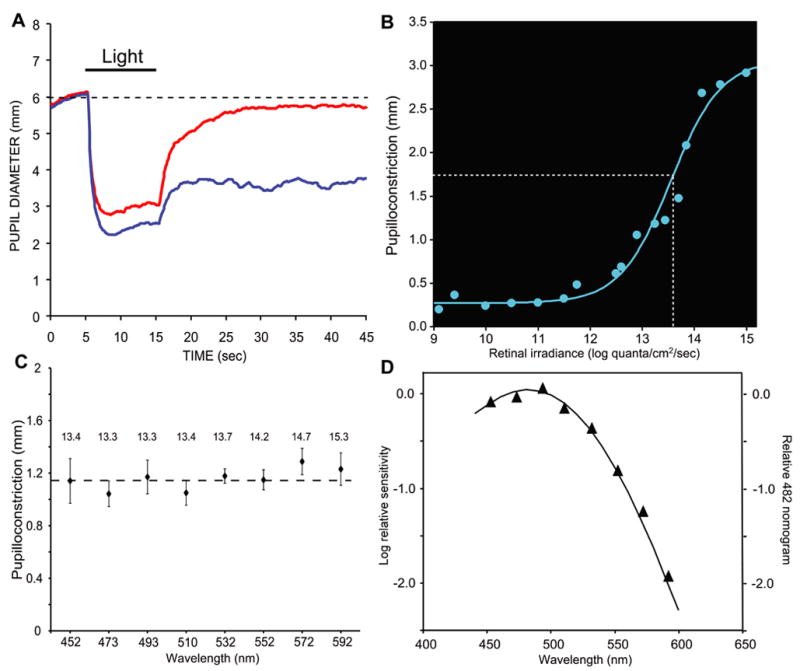Figure 4.

Post-stimulus, sustained pupillary responses in humans. (A) Averaged responses (n=3) of the pupil to 493 nm light of 14.1 log quanta/cm2/second irradiance (blue trace), and 613 nm light of 14.1 log quanta/cm2/second irradiance (red trace). (B) Retinal irradiance-pupillary response plot for 493 nm irradiance. The white dotted line indicates the retinal irradiance required to produce half-maximal pupilloconstriction. (C) Criterion pupil response. Magnitude of the sustained post-stimulus pupillary response after light OFF at eight different wavelengths (SEM error bars). The retinal irradiance used at each wavelength is indicated above the data point. Each stimulus irradiance was calculated to produce the same sustained pupil constriction if these responses were mediated solely by a Vitamin A1 pigment nomogram with a peak sensitivity at 482 nm. (D) Spectral sensitivity data derived from the results shown in C. For each wavelength, the difference between the measured and criterion pupilloconstriction in C was converted into an irradiance difference value based on the irradiance-pupilloconstriction response curve in B. This difference value was then combined with the stimulus irradiance value to determine the retinal irradiance required to produce the criterion pupil response at that wavelength. The solid curve, a Vitamin A1 pigment nomogram with peak sensitivity at 482 nm, closely matches the data (▲, R2 = 0.99).
